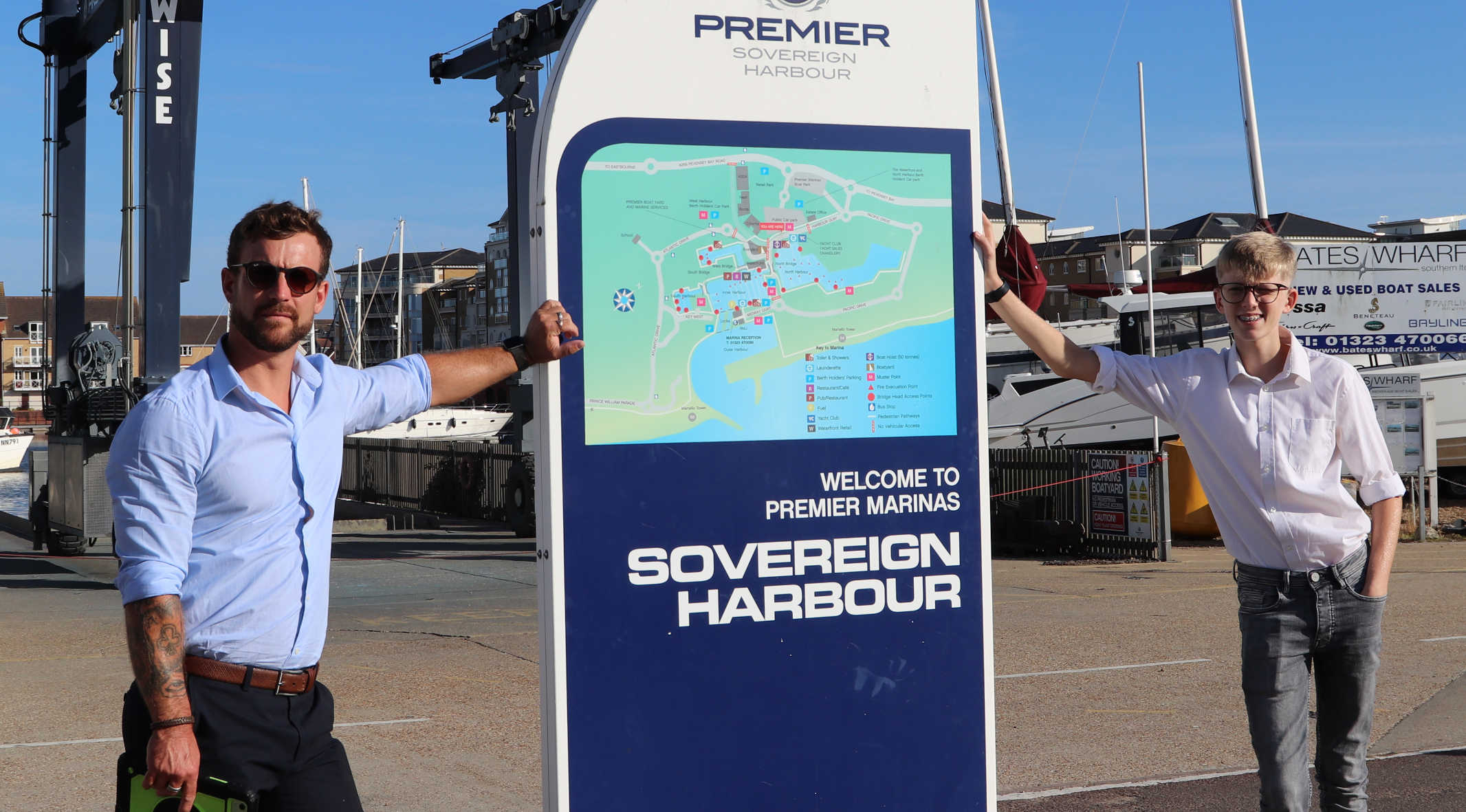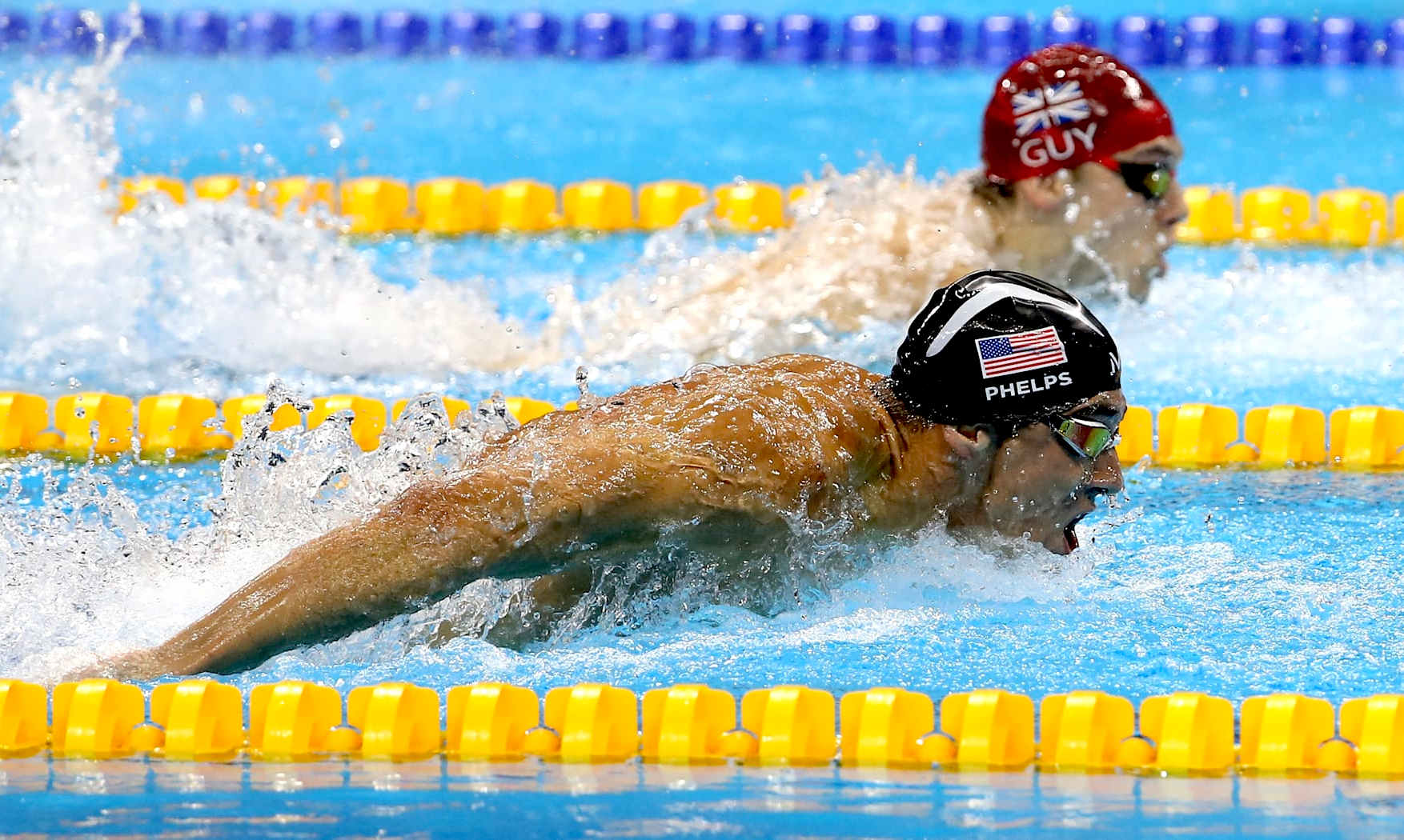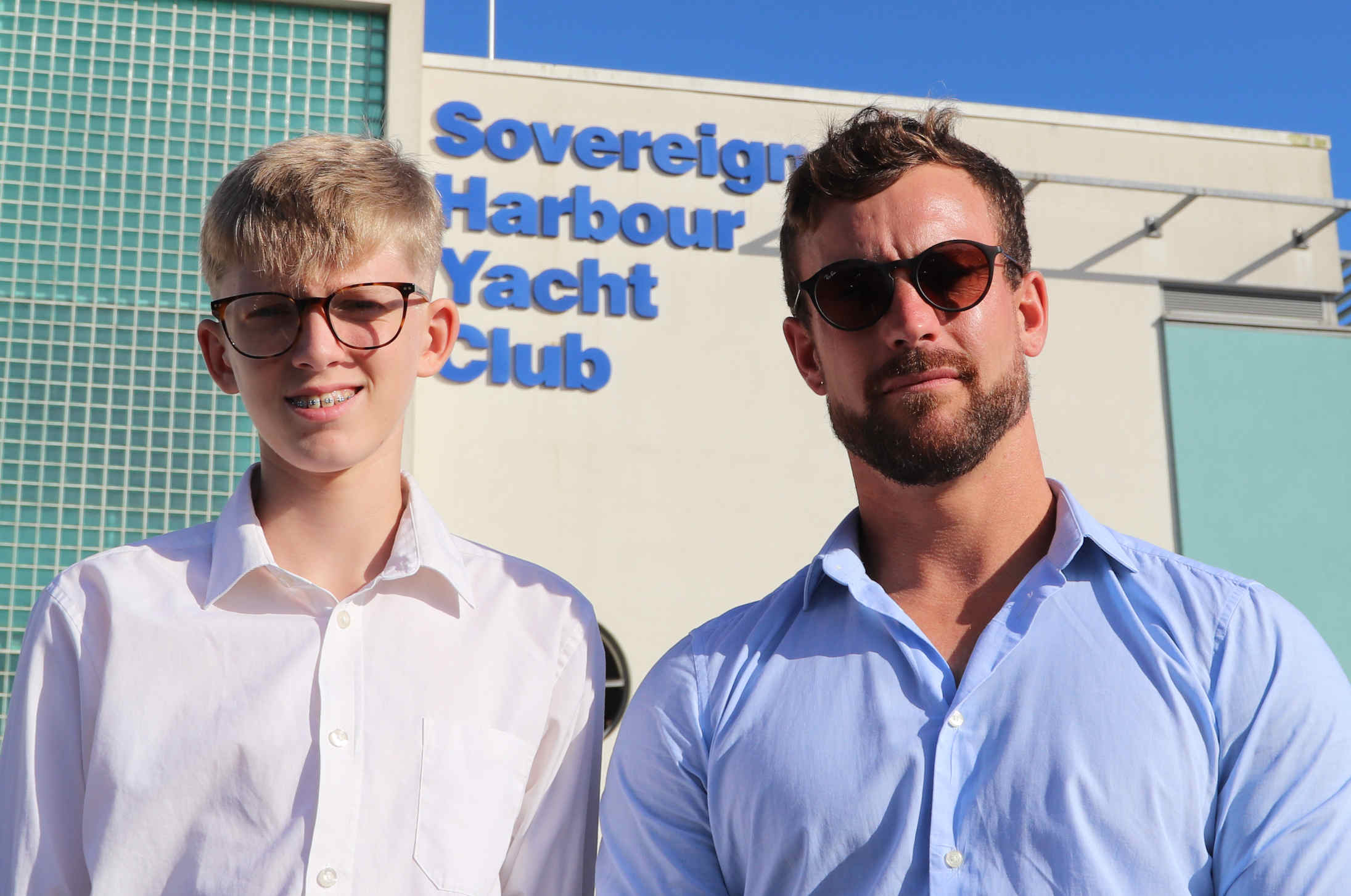
TEAM
ELIZABETH SWANN - A different kind of water sport: Terry and Ryan are team members of the Elizabeth Swann,
JVH2, hydrogen powered ocean racing trimaran.
A boat designed to challenge the diesel
record, to achieve a circumnavigation
in under 80
days - as per the famous Jules Verne novel. Terry says: The fitness fundamentals for sailors are aerobic endurance and muscle
strength is much the same as for most water sports. Diet is very
important, linked to a good exercise regime. Terry is a vegan and
personal trainer. He has
never been fitter and stronger, than when changing to a no-meat dietary
plan. Their team are looking for an experienced skipper on the south coast of
England, for an attempt at, and to set a Jules
Verne zero emission record, aiming for a boat in the water by 2024 - the
150th anniversary of Verne's prediction that H2 would be the fuel of the
future. Contact
the Cleaner Ocean Foundation for more information.
Athletes who compete in the Olympics don’t just make it on natural talent; they get there because every day they put in the hours of training needed to make it to the international level. If your goal is to qualify for the Olympics, you will have to dedicate yourself completely, centering your days around gym time and training. Training involves not only spending time practicing your sport and strengthening your body, but also getting used to competing in high-pressure situations and becoming mentally and physically as strong as you can be.
Athletes don’t get to the top by accident. It takes superhuman levels of time, dedication, and
focus - and that includes paying attention to what they put in their bellies.
START EARLY
Start early. Olympic athletes often start training in their childhood, especially for popular and rigorous sports like gymnastics, where many start around 4 or 5 years of age. If you have not started serious training and are a teen or adult, keep in mind that for many sports, athletes must start training young to be able to compete while their body is in prime physical shape.
MAJOR LIFESTYLE ADJUSTMENTS
Before you commit to a full training schedule, you will have to embrace the fact that you’ll have to make major life changes to be able to compete on an elite level. You may have to get
home-schooled if you’re not already so that your training is your primary focus. While you are in training, your education and other commitments will have to take a backseat.
If you have already finished school, you still may have to make major sacrifices like relocating or quitting your job. Keep in mind that to make it to the Olympic level, you will have to hand over a lot of money for coaches, training facilities, travel expenses for competitions, and many other additional and sometimes unforeseen costs.
FINDING A COACH
A coach is an essential element of your training. Even if you’re highly skilled in your sport, you probably don’t know the ins and outs of qualifying for competitions, the most effective training styles, and what it takes to compete on in international standard.
You may be able to find coaches through the Internet or through a network of athletes in your sport. Make sure that the coach you choose has experience putting athletes through the Olympics. A coach acts not only as a fitness trainer, but also as a guide and mentor through the grueling training process.
TRAINING FACILITIES
Ask your coach to point you to a top caliber training facility where you can practice daily. Make sure the facility has all the equipment that you need to be able to practice all the expected skills in your particular sport.
QUALIFYING REQUIREMENTS
Learn about the qualifying requirements for your sport. Research what you need to do to qualify for the Olympics in your individual sport. It's best to understand the qualifying requirements as early as you can so that you can structure your schedule and training around them. You might also ask your coach or your gym for information on how to qualify.

ARTISTIC SWIMMING
First called synchronized swimming when it debuted at the 1984 games, this sport and rhythmic gymnastics are the two women-only Olympic disciplines. The United States proved the first powerhouse country, winning both the duet and team categories in 1984 and 1996.
The sport combines artistic elements of dance and gymnastics with an intense foundation of athleticism built by many hours spent training on land and in the pool. Routines are centered around themes, and judging is based on technical execution of the swimming elements, synchronization, lifts and artistic impression. Recent leaders in the sport include Russia, China, Japan, Ukraine and Spain.
CANOE SLALOM
As with canoe sprint, canoe slalom also utilises canoes and kayaks, however, there are some significant differences. The sport was modelled from ski slalom and began in Switzerland in 1932. In its early days, it was first performed on flat water, but later switched to white water rapids.
While canoe slalom basically uses the same type of craft as canoe sprint, the boats are designed differently. While in canoe sprint, the boats are long and streamlined, in canoe slalom, the boats are small, light and agile, allowing for greater manoeuvrability through the rapids.
Canoe slalom became popular shortly before World War II, with the first known competition occurring in 1933. The first International Federation to govern canoeing was the Internationale Repräsentantschaft für Kanusport (IRK) founded in 1924. After World War II, this organisation was succeeded by the International Canoe Federation (ICF), which governs both canoe sprint and canoe slalom as well as six other canoeing disciplines. It is located in Lausanne.
CANOE SPRINT
Canoes and kayaks have been featured in mankind's transportation toolbox since times B.C. The Canoe Sprint, where athletes paddle on short flatwater courses in a successive series of heats until the fastest wins, started as a demonstration sport at the 1924
Olympics and received medal- winning status in 1936. Athletes in Canoe Slalom, introduced at the 1972 Olympics, navigate up- and down-stream gates on a whitewater course in a race against the clock.
Tokyo could be a historic turning point for America according to Rok Sribar, general manager of high-performance programs for the American Canoe Association. Nevin Harrison might be the first female gold medalist in the 200m event as women's sprint canoeing makes its debut in Tokyo. Similarly, 17-year-old Evy Leibfarth could be the first U.S. athlete to win gold in slalom canoe or kayak. The toughest competition to both will come from European athletes.
DIVING
Diving is a youth and family-oriented sport. At the Olympic level, it also captivates extreme sports fans with its precision, mid-air, visual appeal. None says this better than 10m platform dives where athletes can hit the water at nearly 35 miles per hour.
Most common are the solo and synchronized 3m springboard events. Each dive is assigned a degree of difficulty and scored on the approach, flight and water entry. United States has dominated the sport since its first games in 1904, racking up more than 100 medals since then.
ROWING
French-born father of the modern Olympics, Baron Pierre de Coubertin, made sure his favorite sport of rowing was included in the event's 1896 revival, although it was canceled due to weather. Women's events came seven decades later. In Tokyo, 14 boat categories in two disciplines: sweep rowing and sculling will race on a 2,000m (1.25-mile) course.
"Rowing looks graceful, elegant and sometimes effortless when it is done well. Don't be fooled. The sport demands endurance, strength, balance, mental discipline and an ability to continue when your body is demanding that you stop," says Brett Johnson, senior director of programs and communications for the U.S. Rowing Association.
SURFING
In 2021 this ages-old board sport made its Olympic debut at one of the farthest east beaches in Japan, known for its consistent
Pacific Ocean swell. The two-and-a-half to four-day competition will take place anytime in an eight-day window when judges consider conditions are best. Initial rounds, composed of heats, progressed to gold, silver and bronze matches. Surfers are scored on quality (choosing the right wave and performing superior maneuvers) over quantity (surfing as many waves as possible).
"This venue has smaller wave conditions, so surfers with a strong air game will likely do well," says Becky Fleischauer, communications specialist for USA Surfing. Our team members have been training for these conditions both in wave pools and in the ocean, so they are in a strong position. Team USA's inaugural four Olympians represent both coasts: Florida's Caroline Marks and California's Kolohe Andino, as well as Hawaii's John John Florence and Carissa Moore.
SAILING
Sailing (also known as yachting until 2000) has been one of the Olympic sports since the Games of the I Olympiad, held in Athens, Greece, in 1896. Despite being scheduled in the first Olympic program, the races were canceled due to severe weather conditions. Apart from the 1904 Summer Olympics, sailing has been present in every edition of the Olympic Games.
Gender - Until 1988, sailing was a gender neutral 'open' sport where male and female sailors competed together. Even in 1900, several women participated at the Olympic sailing regattas. The exception to this is the post
WWII 1948 Olympics where the IOC decided the events should only be open to male sailors. In 1988, the first exclusive women's sailing event was introduced. Sailing was also one of the first sports to introduce a compulsory mixed gender events in 2016 the Mixed Multihull was introduced.
Discipline - Most of the Olympic sailing competitions were done in what is called a fleet race format. At some Olympics, however, was also the match race format, or a mixed fleet/match race format.
Classes - Over time, different classes of boat featured at the Olympics. Initially, the classes were specified in tons, then later in meters, feet or generic names. For the discontinued classes, the Vintage Yachting Games were introduced in 2008.
These are the current classes:
Dinghy (470, 49er, 49erFX, Laser Standard. Laser Radial)
Multihull (Nacra 17)
Sailboard (IQFoil)
Kiteboard (Formula Kite)
Medal Tables - Great Britain leads the Olympic sailing medal ranking table
SAILING WORLD CHAMPIONSHIPS
The Sailing World Championships (formerly ISAF Sailing World Championships) are World championships in sailing for the 10 events contested at the Summer Olympics, organized by World Sailing (formerly ISAF) and held every four years since 2003. In contrast to other years, when each class organise their World championship under supervision of World Sailing, they are the combined World championships for all the disciplines of the next Summer Olympics and serves as the major qualification event for it.
SWIMMING
MARATHON SWIMMING
One of the original 10 sports at the first modern 1896 games, swimming is today second only to athletics in the sheer number of events. New in Tokyo was the men's 800m freestyle, women's 1500m freestyle, and the mixed 4—100m medley relay. This brings the contest count to 35 versus 32 in Rio in 2016. Scoring is all about speed: the first swimmer to touch the wall wins.
Australia, Japan, and Great Britain have strong swimming teams, yet America has dominated the podium and hardware count since 1960. "Olympic medal winners Ryan Murphy, Lilly King, and Kathleen Baker are back, and there are some incredibly talented up and coming swimmers that we hope make waves in Tokyo as well," says Isabelle McLemore, managing director of communications at USA Swimming. Three U.S. athletes will race in the 10km open-water marathon swim, a discipline first added in the 2008 Olympics.
WATER POLO
This is a combination of many sports that fans already love, including soccer, hockey and basketball, is how Greg Mescall, director of communications for USA Water Polo, likes to describe the sport. It's four quarters that are each eight minutes long, played in an all-deep pool with six field players and one goalie on each side. The most goals win.
Water polo first entered the modern Olympic program in 1900. A century later, women's water polo earned its medal-winning status. In Tokyo, the American women will attempt to be the first female water polo team to win three straight Olympic gold medals. They are already the first to win two straight Olympic golds. Australia, Spain and Hungary are the women's chief challengers, with Hungary, Serbia and Croatia for the men.
PREPARING
FOR YOUR CHOSEN WATER SPORT
Most water sporting enthusiasts don’t need an intensive exercise regime to
enjoy their chosen sport, which tends to keep you fit and active
stand-alone. That said, strength and endurance can be really beneficial when you’re spending
a lot of time on, or in the water - and give you the endurance edge over other teams in, for example, competitions, when you will need a far higher level of power and endurance.
Especially swimmers and rowers.
The type of water sport you love will impact the type of training you need. It is specific to your
expectations. For example, leisure canoeing and scuba divers may not need to be ocean athletes. But it pays to keep your body in good condition, to be able to meet
any challenges rivers
and seas can throw at
you, and keep your mind alert to changing conditions, when the
opportunity to build up stamina during sporting activities is limited,
those exertions rather draining reserves.
Diet is important, to help you stay in shape, and to build up your stamina before embarking on your
water based adventures. Water being one of the most important
ingredients for life
on planet earth.
Exercise and diet is thus interlinked, especially for those who are climate
conscious, perhaps contemplating a pescatarian,
vegetarian, or most demanding of all, a
vegan diet while afloat.
When you can’t get out or in the water, try to work on your fitness at home instead. It is hard to stay in shape during
off-seasons, with high calorie meals during winter celebrations, that pile on the pounds. Making it all the more difficult to stay fighting fit when it’s time to get back
to your water sport.

YOUTH
OCEAN AMBASSADOR - Ryan is the youngest member of the Elizabeth Swann
team. He is coached in fitness matters by Terry, a seasoned vegan, having
weaned himself off meats over a year ago. Ryan has been attending
exhibitions and events for many
years. Often helping to man the stands at events where (for example) the
SeaVax
proof of concept vessel was on
display.
WATER
SPORTS A - Z
Canoeing
Diving (high)
Kite Surfing
Kayaking
Octopush
Olympics Games
Rowing
Scuba Diving
Surfing
Swimming
Water Polo
Water Skiing
Whitewater Rafting
Yachting
The
stronger you become both
mentally and physically, the better you will become at coping with the stresses associated with competition, if that is your aim. You need to be sharp, prepared and capable in order to win competitions.
Especially when competing in the Olympic
Games.
If you want to improve your general fitness, you don't need to be quite so disciplined and focused. But, it pays to make the effort when you can.
So think about your health, diet and exercise, for which you will see
results, and being healthier, is one way of remaining youthful and
living longer.
If it was easy, then everyone would be doing it.

